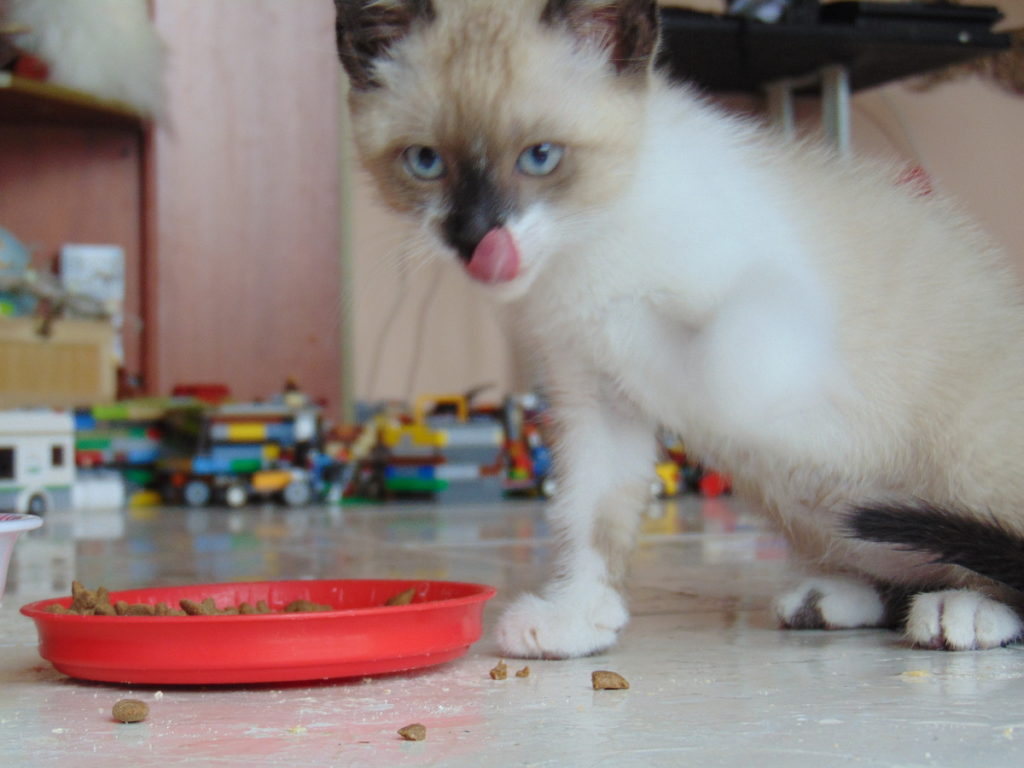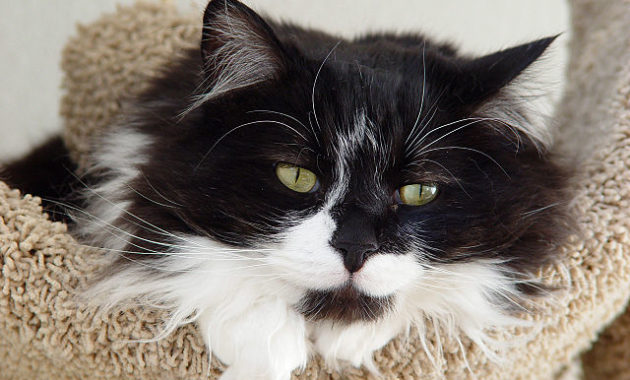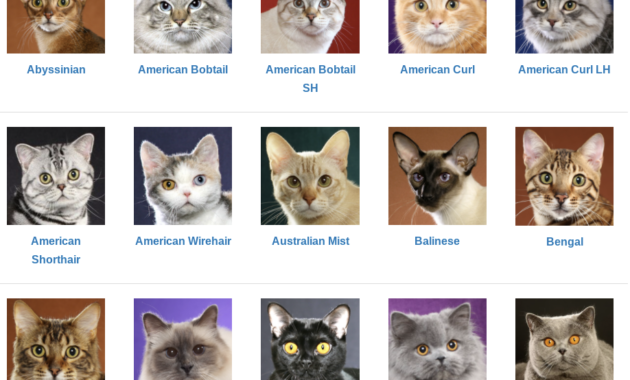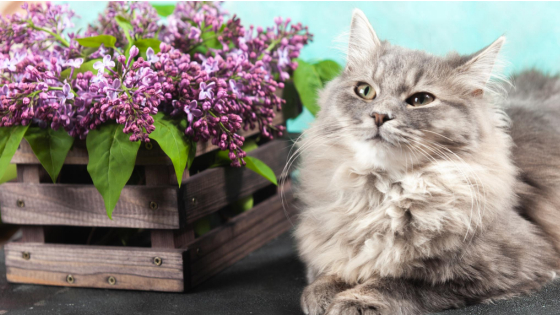The concept of a clowder, often overlooked in discussions about feline behavior, unveils a captivating facet of cats' social dynamics.
While commonly associated with solitude and independence, the idea of a clowder sheds light on the communal nature of these enigmatic creatures.
Observing how cats navigate group settings offers a glimpse into their intricate social structures, hinting at complexities that go beyond mere cohabitation.
Exploring the nuances of clowders not only enriches our understanding of cats' behavior but also prompts reflection on the inherent intricacies of their social connections.
Key Takeaways
- A clowder is a group of three or more cats, providing social bonding and protection.
- Cats form clowders for survival, seen in feral colonies and domestic settings.
- Terms like 'glaring,' 'cluster,' and 'pounce' describe various groups of cats.
- Understanding cat behavior in clowders helps decipher social dynamics and communication among cats.
Clowder Etymology and Definition
Originating from the English word 'clotern,' the term 'clowder' is specifically used to describe a group of three or more cats, reflecting its linguistic connection to words like clot, clutter, and cluster.
In the feline world, a clowder represents a gathering that surpasses the mere companionship of two cats, highlighting a threshold for defining a collective identity.
The choice of 'clowder' over 'glaring' for this larger assembly underscores the social dynamics and spatial awareness that come into play within such groupings.
This distinction emphasizes the significance of numbers in shaping cat behaviors and interactions, shedding light on the evolutionary and behavioral underpinnings that drive these furry creatures to form structured social units beyond solitary existence.
Group Formation and Behavior
Group formation and behavior in cats reveal intricate social structures that contribute significantly to their overall well-being and survival strategies.
- Cats may form groups for survival reasons, with feral cat colonies being a common type of clowder.
- Cats in colonies hunt independently, unlike dogs or wolves, and domesticated cats can also form clowders.
- Grouping provides protection and social bonding among cats, enhancing their overall well-being.
Understanding how cats interact within groups sheds light on their natural tendencies and the benefits they gain from social structures. This behavior highlights the importance of companionship and collaboration in the lives of these independent yet social animals.
Variety of Terms for a Group of Cats
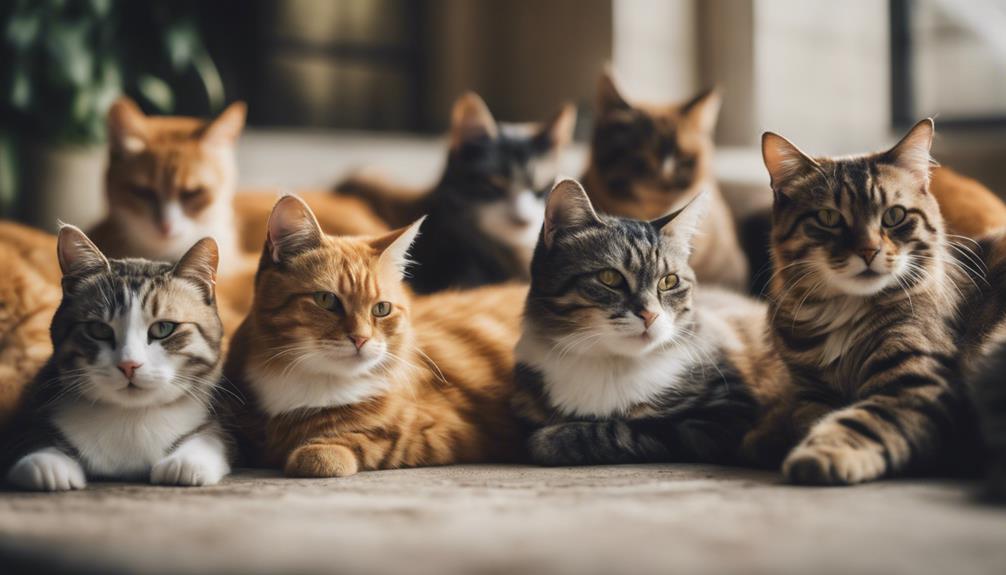
When exploring the terminology associated with a group of cats, it becomes evident that various descriptive terms are used to characterize these feline assemblies. Apart from the commonly known term 'clowder,' there are other interesting terms that depict a group of cats. Here is a table showcasing some of the diverse terms used for groups of cats:
| Term | Description |
|---|---|
| Cluster | Implies a close grouping of cats together |
| Clutter | Suggests a disorderly or haphazard assembly of cats |
| Pounce | Reflects the swift and agile nature of a group of cats |
These terms provide a colorful array of expressions to depict the different manners in which cats may congregate.
Grouping in Cat Behavior
In the study of feline social dynamics, the interaction patterns within a clowder of cats offer valuable insights into their behavior and communication methods. Cats are known for their independent nature, but when they come together in a group, interesting behaviors emerge:
- Communication Techniques: Cats use various vocalizations, body language, and scent marking to communicate within their clowder.
- Hierarchy Establishment: Within a clowder, cats often establish a hierarchy based on factors like age, size, and personality.
- Social Bonding: Grouping in cat behavior fosters social bonds, mutual grooming, and cooperative behaviors, contributing to the overall well-being of the clowder.
Feral Cat Colonies
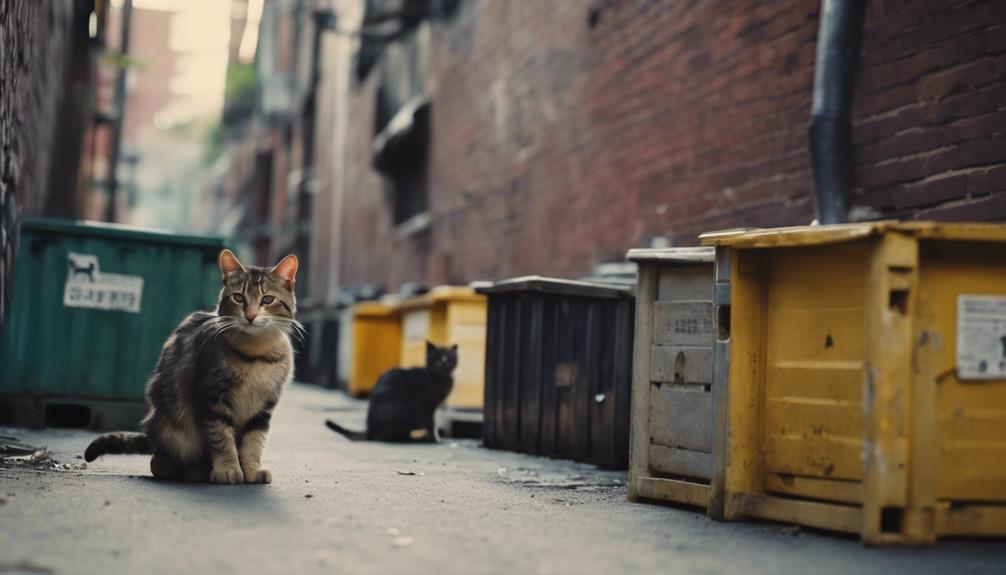
Studying the social dynamics of feline behavior unveils the intricate structures within clowders, shedding light on how cats interact and communicate, particularly within the context of feral cat colonies.
Feral cat colonies are groups of undomesticated cats that live together in a specific territory. These colonies form due to a variety of reasons, including the availability of food sources, shelter, and protection.
Within feral cat colonies, cats establish hierarchies and territories, exhibiting complex social behaviors such as communal hunting and caretaking of kittens.
Understanding the dynamics of feral cat colonies is essential for effective management strategies, including Trap-Neuter-Return programs aimed at controlling population growth and improving the welfare of these feline communities.
Social Dynamics Within a Clowder
Exploring the social dynamics within a clowder reveals the intricate interactions and behaviors that shape the relationships among cats in a group. Cats exhibit various behaviors and hierarchies within a clowder, influencing their social structure and cohesion:
- Hierarchy Establishment: Cats often establish a hierarchy within a clowder through displays of dominance, submission, and territorial behaviors.
- Communication Methods: Cats use body language, vocalizations, and scent marking to communicate within the group, conveying emotions, intentions, and boundaries.
- Social Bonding: Interactions such as grooming, playing, and sharing resting spaces foster social bonds within the clowder, promoting cooperation and mutual care among group members.
Insights Into Feline Behavior
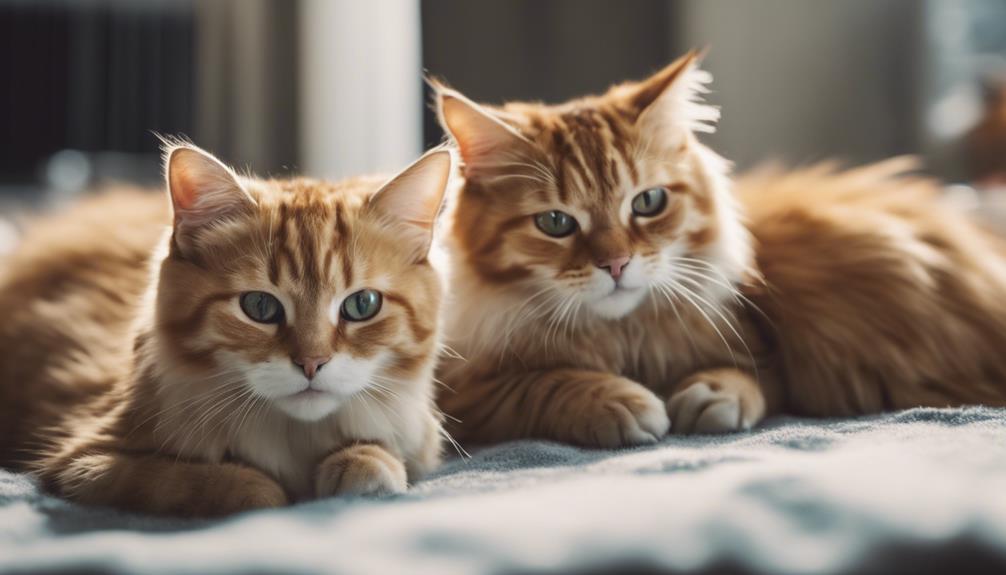
Understanding the social dynamics within a clowder provides valuable insights into the complex behaviors and interactions that shape feline group dynamics. Feline behavior is influenced by factors such as hierarchy, communication methods, and territorial instincts.
Within a clowder, cats establish a social structure through interactions that involve body language, vocalizations, and scent marking. Observing how cats groom each other, share resources, or engage in play can reveal their cooperative or competitive nature within the group.
Studies on feral cat colonies show how cats collaborate during hunting or caring for offspring, highlighting their adaptability and social bonds. By studying feline behavior within clowders, researchers and cat owners alike can gain a deeper understanding of cats' social needs and tendencies.
Conclusion
In conclusion, the intricate world of feline social structures reveals the fascinating phenomenon of clowders. From the etymology of the term to the dynamics within a group of cats, the complexities of feline communities offer insights into their survival instincts and social behaviors.
Through the lens of clowders, we gain a deeper understanding of the communal bonding and protection mechanisms that shape the intricate tapestry of feline social dynamics.

